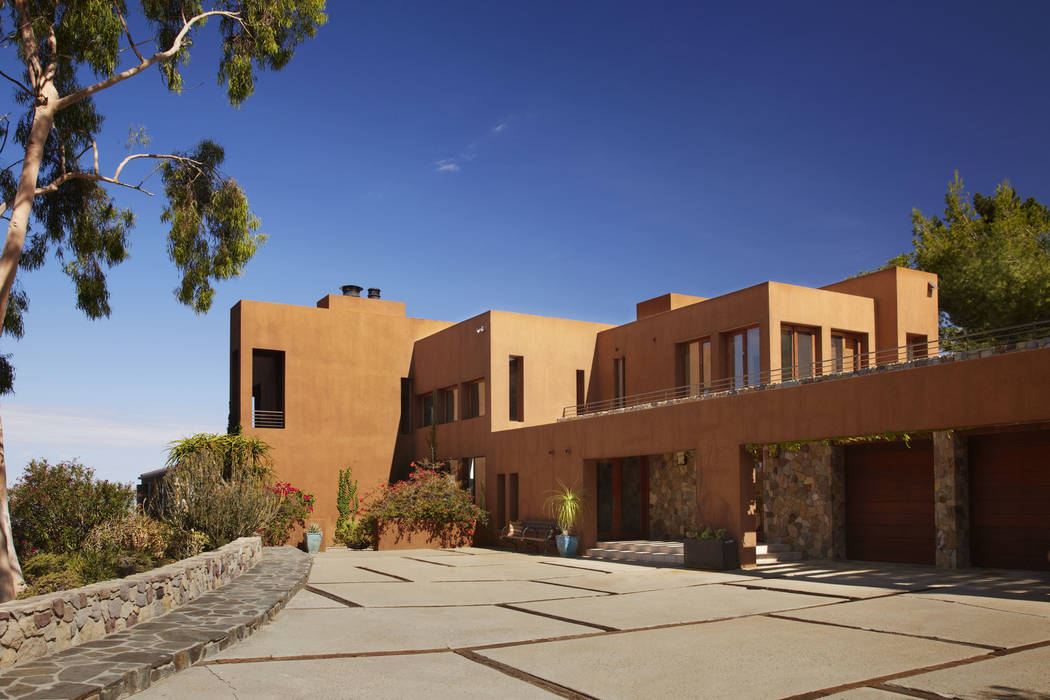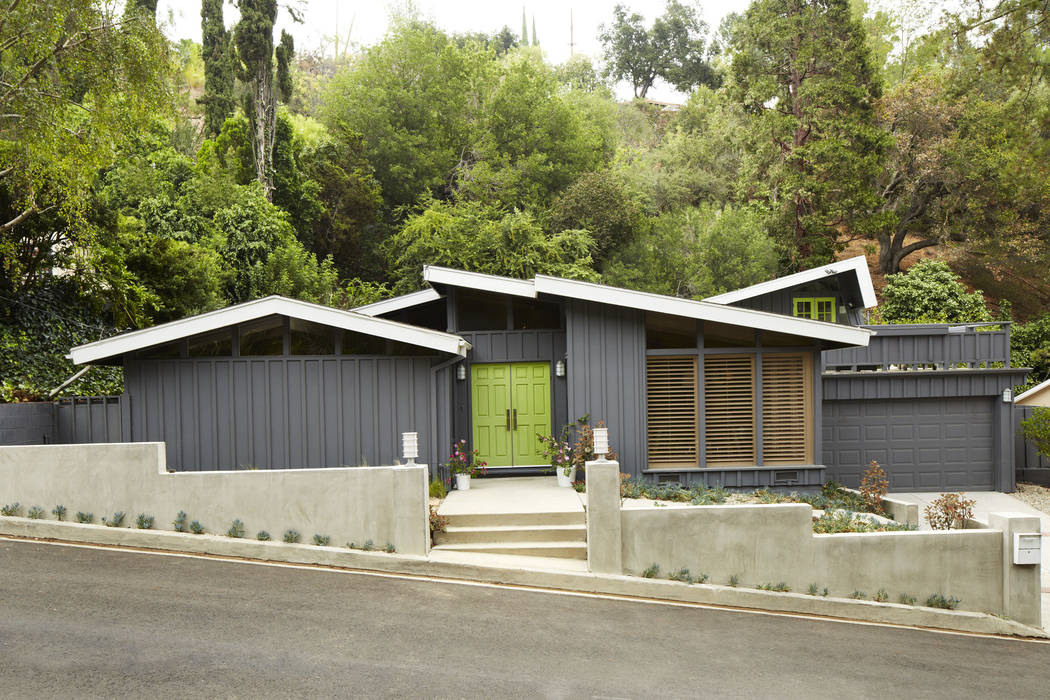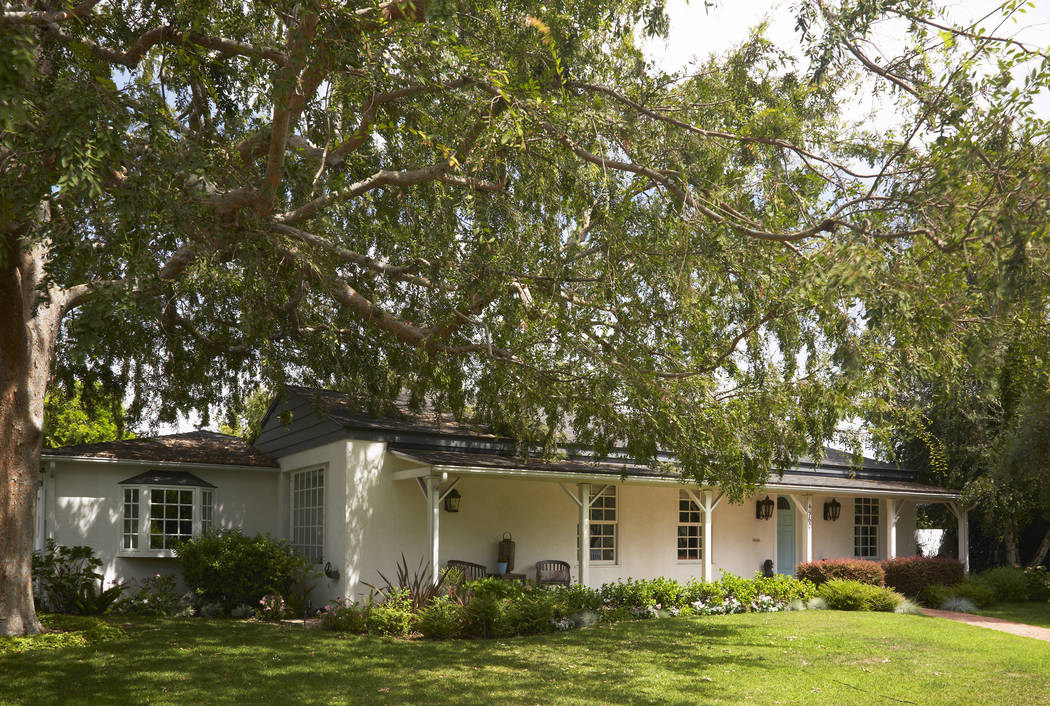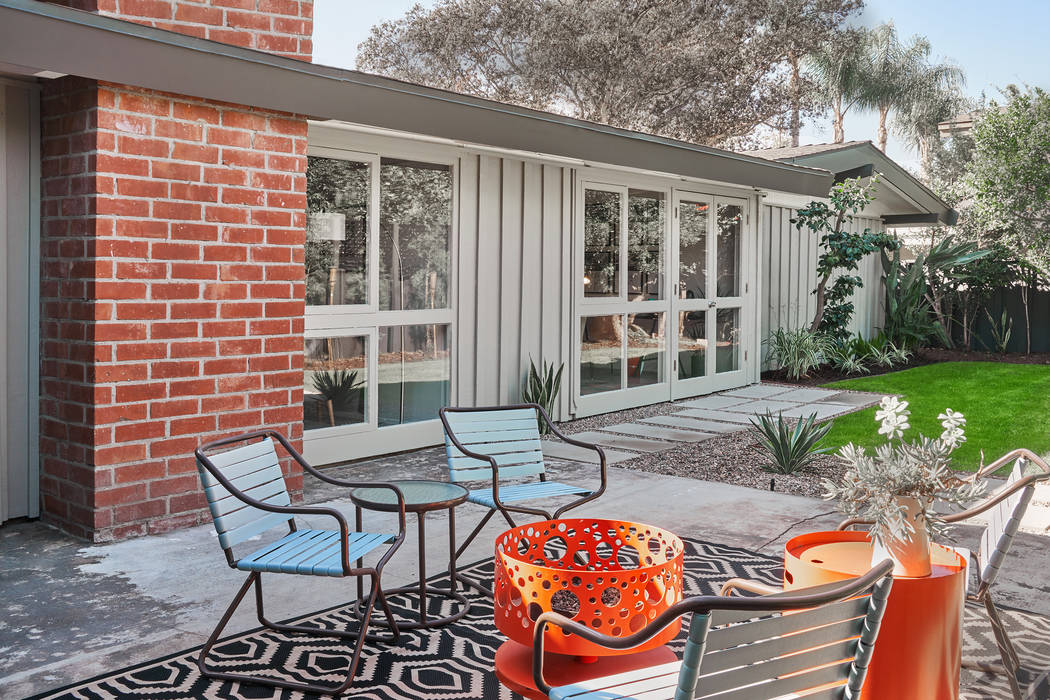Give your home a fresh coat of paint
The exterior paint on most stucco homes in Southern Nevada is expected to last anywhere from 10 to 15 years before it starts breaking down because of our harsh sunlight and high temperatures. When that happens, repainting is your only option. And if you live in a community governed by an HOA, you may be required to repaint even sooner.
If you do live in an HOA community, you will have to contact the management team to see what color codes were used on your home for the exterior walls, doors, trim and shutters.
If you want to change the color scheme on your home, the HOA will have to approve it. Usually, it has about half-dozen or more schemes to choose. If you are really in love with a color scheme you saw in another neighborhood or some architectural magazine, you might be able to talk your HOA into adding it to their palette of home colors.
“I always encourage homeowners to reach out to their homeowners’ board and see if they are willing to update their schemes,” said Ashlee Hott, HOA account executive with Sherwin-Williams in Las Vegas. “Sometimes they will remove old schemes and update them with newer ones.”
If you are limited by an HOA to a color scheme, then you are pretty much assured the exterior and trim colors will look good on your home. The only other choices you have are whether you want to paint your home yourself or hire a professional. In both instances, Hott recommends choosing high-quality paints, as opposed to selecting economy brands.
“High-quality paints last longer, and the color retention is much better, especially with darker colors,” Hott said. “You will also get much better coverage (less chance of paint being too thin in some areas.)”
Hott said homeowners should apply two coats of paint to the exterior of their homes to get thorough coverage. If the home is in good shape — where there are no areas stucco patchwork is needed or cracking has occurred — then painting is all that is needed. If repairs are done, then these areas must be painted with a primer before applying stucco exterior paint.
“Be aware of your bids if you are hiring a professional painter,” Hott said. “Make sure it says in the bid that you are getting two coats of paint. Stucco is porous, and that is why we recommend two coats.”
Besides making your home look new and fresh, repainting also retains the structure of the stucco. Hairline cracks in the stucco allow moisture to seep in and break down the structural integrity, causing it to chip off. Harsh sunlight over time also breaks down the stucco.
If you aren’t bound by an HOA’s guidelines, then you have the luxury of being more creative in your exterior color schemes. But you also are more susceptible to screwing up big time if that color swatch you thought looked good turns out to be hideous when applied to your home.
Sara McLean, color marketing manager with Dunn-Edwards, recommends taking sample liquid paints you like and applying them to areas of your home to see how they look when wet and after they dried. You will be able to see how they play in the sunlight at different times of the day, as well as how they correspond to your landscaping and roofline.
“The roofline has a lot of color in it and will influence the color of your house,” McLean said. “One of the biggest mistakes people make is not testing before buying paints. They only look at a color chip. You should enjoy the process and not be in a hurry.”
Most everyone would agree the common color scheme dominating Southern Nevada tract-home communities is beige or some shade of this off-white tan color. In contrast, today’s modern homes accented by large windows, flat rooflines and angular architecture are leaning toward darker exterior colors.
“Color stays fairly classic for the most part on exteriors, but recent trends include white and black color schemes to mimic a European style; rustic farmhouse industrial design; warmer body and trim colors such as warmer grays, browns, chocolates; darker charcoal and black exteriors on the body (not just the trim work); and brighter door fronts,” McLean said.
She added that deep greens and deep blues are also being used on trims. And for even bolder looks, some homeowners are painting their homes red, burgundy or blue with white trims.
Hott stressed that homeowners painting residences themselves need to make sure the exterior is power washed before applying any paint. It must be clean, dry and dull looking before doing any painting.
Also, she said, all house paints come with data sheets recommending the best temperatures to paint, which are usually done in the morning before it gets too hot. Spring and fall are the ideal times of the year to paint the exteriors of homes.
“Make sure you talk to professionals (at paint stores) before taking on any project this size,” Hott said.
Homeowners should keep in mind that professional painters usually don’t get too involved in advising what color to paint your home. They stick to standard color schemes, so it’s up to homeowners to do their own research, paint testing on sections of their homes and consulting with color technicians at paint stores.
If you do decide to hire a professional painter, it’s recommended that you get:
Three to five quotes stating the scope of work that includes start and completion dates and includes two coats of paint to the exterior.
Three references.
A list of what products and colors will be used including the brands.
Total cost.
Everything in writing, signed and dated, which includes the original quote and final contract.
Check with the Nevada State Contractors Board to make sure the painter is licensed. You can see if there have been any disciplinary actions against the contractor. The contractor’s license number should be on all business cards, quotes, final contract and the vehicle he or she is driving.
Don’t pay cash and don’t pay more than 10 percent up front, or $1,000, whichever is less. Keep all payment records, and only make your final payment once you are completely satisfied with the job.
Most importantly, enjoy the process.

























